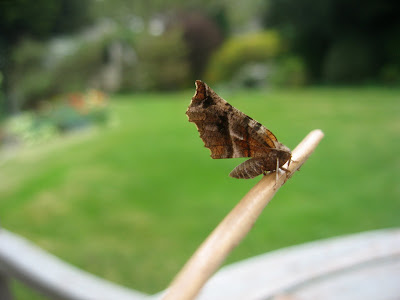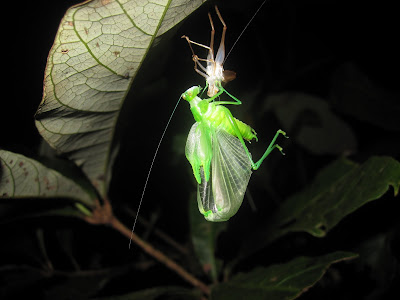
Even earlier on the wing is the March Moth, which I've not seen here before. But that's largely, or wholly, because I've never used the trap so early, and certainly never in March. It's a rather drab and spindly moth, reminiscent of Aunt Vera in Giles cartoons. I've cropped the pic so that it looks like a teacher homing in on a tiny pupil - the fly, of which the trap had many - to give a telling off. (Ah but... Dean has kindly put me right on this (see Comment). It's actually the melanistic (dark) version of a rather large micro-moth called Diurnea fagella which has the melancholy distinction that the female has no wings and can't fly. How mean.)

A Pebble Hook Tip next, whose raked wings I've earlier compared to a Star Wars jet. Sorry about all these similes and metaphors, but moths' extraordinary variety prompts them. I do like these distinctive ones, compared with the worthy but plainer Quakers and Drabs.

And lastly, a very interesting moth called the Pale Pinion. After reading Waring & Co, I doubted my identification because in 2003 they described it as local in the North and not very likely to be found. But I couldn't see anything else similar and so Googled, which brought up some other interesting Yorkshire/mothy websites, all of which are recording Pale Pinions. So it seems to be moving North and it's very welcome. The patterning is yet another variety in the wonderful range, a sort-of quiver of straw-coloured arrows slung on the insect's back. This Pinion is taking an interest in eggbox architecture. I'm not sure what the circular structure is but will check.
Actually I just rechecked Waring et al and the change in this moth's distribution really is interesting. They have it as local or as they say 'thinly distributed' in various parts of the UK such as the South, Midlands and North West, but no mention of Yorkshire and the North East. No doubt the county moth recorders are putting this right. I must remember to send ours my list at the end of the season.






































